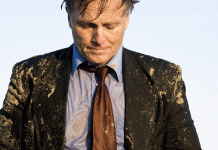An urban legend claims that the Church vehemently opposed the dissection of corpses through medieval decrees of prohibition or limitation of this practice.
It is believed that the Church hindered the development of medicine and surgery. However, history contradicts this perception.
The first recorded instance of anatomical dissection for scientific purposes dates back to the 6th century BC when the Greek physician Alcmaeon initiated a series of anatomical investigations on animals.[1] Later, in the Roman Empire, the prohibition of practising dissection (150 BCE) delayed the study of anatomy. It was not until AD 30 that the Roman physician Celsus published a collection of medical writings suggesting that “it becomes necessary to lay open the bodies of the dead” for understanding human anatomy.
A century and a half later (AD 180), the Greek physician Galen, who lived in Rome, became the first to publish his research results in anatomy after conducting two clandestine dissections. These were, however, small steps considering that the practice was discouraged. The taboo persisted initially within Christianity, as the doctrine of the new religion promised bodily resurrection, which some considered impossible if the body was subjected to dissection.
However, contrary to the general impression, during the Medieval period, the Church did not prohibit human dissections. It is true that certain edicts were issued to counteract specific practices. One of these edicts, “Ecclesia abhorret a sanguine,” was issued following the Council of Tours (1163) and presumed that the shedding of blood was incompatible with the status of a cleric, hence clerics were prohibited from practising dissection.[2] Another frequently cited edict is the one issued by Pope Boniface VIII (1300), but it contains no reference to the prohibition of practising dissection for medical purposes.
It is believed that the Church hindered the development of medicine and surgery. However, history contradicts this perception.
The only prohibition concerns the barbaric practice, widespread during the Crusades, of dismembering the bodies of crusaders and boiling them to separate flesh from bones. This was done so that the remains of the dead could be more easily transported to their native lands for burial.[3] However, the Medieval period marked several advances in the field of surgery.
In 1315, the first public dissection took place, performed by the Italian surgeon Mondino de Luzzi. Andreas Vesalius, one of the fathers of modern surgery, undertook numerous anatomical investigations in the 16th century, making revolutionary improvements to the teachings of Galen, which were then the main reference point, even though they were based almost exclusively on animal dissections.
The Protestant Reformation brought about an even greater openness to research. Dissections became more numerous, and along with them emerged discoveries that led to advancements in the field of surgery.















